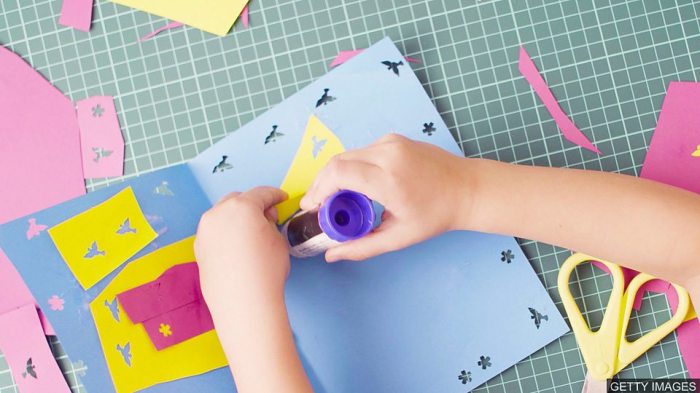8 important milestones you should have besides getting married and succeeding work. This isn’t just about a checklist; it’s about crafting a life rich with personal growth, financial security, meaningful connections, and overall well-being. Beyond the traditional markers of success, we’ll explore eight essential areas that contribute to a truly fulfilling life. From nurturing your creativity to giving back to your community, these milestones will help you discover and cultivate a life of purpose and happiness.
This journey delves into the importance of personal growth, financial independence, meaningful relationships, and physical and mental well-being. We’ll also explore the power of learning, creativity, community involvement, and travel. Each milestone is presented with actionable steps and measurable outcomes, helping you build a balanced and enriching life beyond the typical career and relationship goals.
Personal Growth & Development
Beyond the milestones of marriage and career success lies a rich tapestry of personal growth. Cultivating these areas fosters a deeper sense of fulfillment and well-being, enriching all aspects of life. This exploration delves into eight key areas of personal development, offering practical steps and resources for nurturing these essential facets of self.
Eight Areas of Personal Growth
Personal growth is a multifaceted journey, encompassing physical, emotional, intellectual, and spiritual dimensions. Cultivating these areas fosters a well-rounded individual capable of handling life’s challenges with resilience and grace.
| Area of Growth | Definition | Actions to Take | Expected Outcomes |
|---|---|---|---|
| Physical Well-being | Maintaining a healthy lifestyle that prioritizes physical health, including nutrition, exercise, and sleep. | Regular exercise, balanced diet, sufficient sleep, stress management techniques, and regular check-ups. | Increased energy levels, improved mood, enhanced physical resilience, and reduced risk of chronic diseases. |
| Emotional Intelligence | Understanding and managing one’s own emotions and recognizing and influencing the emotions of others. | Practicing mindfulness, developing empathy, actively listening, seeking feedback, and engaging in emotional regulation techniques. | Improved relationships, better conflict resolution skills, increased self-awareness, and enhanced emotional regulation. |
| Financial Literacy | Understanding and managing personal finances effectively, including budgeting, saving, investing, and debt management. | Creating a budget, establishing savings goals, exploring investment options, managing debt responsibly, and seeking financial advice when needed. | Improved financial stability, reduced financial stress, and the ability to achieve financial goals. |
| Intellectual Stimulation | Continuously seeking knowledge and learning new skills, broadening perspectives and enriching cognitive abilities. | Reading books, attending workshops, taking online courses, engaging in stimulating conversations, and pursuing hobbies. | Enhanced critical thinking, improved problem-solving skills, increased creativity, and a broader understanding of the world. |
| Social Connection | Nurturing meaningful relationships with others, fostering a strong support network and building connections with people who share similar values. | Actively engaging in social activities, maintaining existing relationships, seeking out new connections, and contributing to your community. | Stronger support system, improved communication skills, enhanced sense of belonging, and increased social capital. |
| Creative Expression | Exploring and developing one’s artistic talents, fostering imagination, and finding outlets for self-expression. | Engaging in activities like painting, writing, music, dancing, or other forms of creative expression. | Increased self-confidence, stress reduction, enhanced problem-solving skills, and a stronger sense of identity. |
| Spiritual Growth | Developing a sense of purpose and meaning in life, exploring personal values and beliefs. | Engaging in meditation, prayer, journaling, reflecting on personal values, and exploring different philosophical perspectives. | Increased self-awareness, improved decision-making, a deeper understanding of one’s purpose, and a stronger sense of connection to something larger than oneself. |
| Resilience | The ability to bounce back from adversity, adapt to change, and persevere through challenges. | Developing coping mechanisms, seeking support from others, focusing on solutions, and learning from setbacks. | Increased emotional strength, better stress management, and greater ability to handle life’s difficulties. |
Measuring Progress, 8 important milestones you should have besides getting married and succeeding work
Tracking progress in these areas requires a multifaceted approach. Here are three methods to measure progress in each area:
- Self-Assessment: Regularly evaluate your progress based on personal goals and how you feel. This could involve journaling or reflective practices. For example, if you’re focusing on emotional intelligence, note instances where you successfully managed an emotional reaction instead of reacting impulsively.
- Objective Metrics: Use measurable data points, like fitness trackers for physical well-being or financial records for financial literacy. For example, track the number of hours you exercise per week, or the amount you save each month.
- Feedback from Others: Seek feedback from trusted friends, family, or mentors. This can provide valuable insights into your strengths and areas for improvement. For example, ask a friend to observe how you communicate with others and provide feedback.
Resources for Learning
Various resources can facilitate learning and growth in these areas. Here are five resources for further exploration:
- Books: Numerous books provide in-depth knowledge on personal development. Examples include “Mindset” by Carol Dweck, “Atomic Habits” by James Clear, and “Daring Greatly” by Brené Brown.
- Online Courses: Platforms like Coursera, Udemy, and Skillshare offer courses on various personal development topics.
- Workshops and Seminars: Attending workshops and seminars can provide practical guidance and tools for personal growth.
- Mentorship Programs: Connecting with mentors can offer personalized guidance and support.
- Support Groups: Joining support groups can provide a sense of community and shared experience.
Financial Security & Independence

Financial security is more than just a steady paycheck or a supportive partner. It’s a bedrock of freedom, a key to reducing stress, and a powerful catalyst for pursuing your dreams and passions. It’s about having the resources to navigate life’s inevitable challenges and pursue opportunities without financial constraints. This independence empowers you to make choices aligned with your values and aspirations, not just your financial limitations.Financial independence is a journey, not a destination.
It requires proactive strategies, consistent effort, and a deep understanding of your financial landscape. It’s about building a future where you are not solely reliant on external factors for your well-being. It’s about cultivating the ability to weather storms and seize opportunities.
Building a Solid Financial Foundation
Financial security is built on a solid foundation of sound financial habits. This involves careful budgeting, meticulous debt management, and conscious wealth-building strategies. These practices are crucial for long-term financial well-being and a more fulfilling life.
Financial Strategies for Independence
Developing a robust financial strategy involves more than simply saving and investing. It requires a multi-faceted approach that encompasses various strategies. Here are three distinct strategies for achieving financial independence:
- Diversified Income Streams: Don’t rely solely on a single source of income. Explore multiple avenues, such as passive income streams like investments or rental properties. This creates a buffer against economic uncertainties and reduces reliance on a single employer or a single income source.
- Active Debt Management: A significant step towards financial security is tackling and eliminating debt. Prioritize high-interest debts and develop a repayment strategy. Avoid accumulating more debt, and proactively manage existing debt through careful budgeting and disciplined repayment plans. Debt reduction should be a cornerstone of financial security.
- Wealth Building through Investments: Investing wisely and strategically is essential for long-term wealth creation. Understanding different investment vehicles and risk tolerance is crucial for making informed decisions. Start early and be patient, understanding that compounding returns are powerful forces in wealth building.
Budgeting for Financial Freedom
A well-structured budget is the cornerstone of financial security. It’s not just about tracking expenses; it’s about understanding where your money goes, identifying areas for potential savings, and proactively managing your finances.
Debt Management for Financial Health
Debt management is crucial for financial well-being. High-interest debts can significantly hinder your progress toward financial security. Develop a plan to pay down debt, prioritizing high-interest loans and credit cards. Explore strategies like debt consolidation or balance transfers to reduce interest payments and expedite the debt repayment process. Proactive management of debt is essential for long-term financial health.
Building Wealth for a Fulfilling Life
Building wealth is not just about accumulating assets; it’s about creating a financial future that supports your aspirations and provides you with freedom and security. Wealth creation involves careful planning, disciplined saving, and smart investment strategies. Building wealth requires a long-term perspective and consistent effort.
| Strategy | Description | Steps | Benefits |
|---|---|---|---|
| Diversified Income Streams | Generating income from multiple sources. | Explore side hustles, invest in rental properties, create online courses, or develop passive income streams. | Reduces financial risk, increases earning potential, and provides a safety net during economic downturns. |
| Active Debt Management | Proactively managing and reducing debt. | Create a debt repayment plan, prioritize high-interest debts, and explore debt consolidation or balance transfer options. | Reduces financial burden, improves credit score, and frees up funds for investments. |
| Wealth Building through Investments | Growing wealth through strategic investments. | Research different investment vehicles, understand your risk tolerance, and develop a long-term investment strategy. | Generates passive income, increases financial security, and builds a strong foundation for future financial goals. |
Building Meaningful Relationships
Beyond romantic love and professional connections, fostering meaningful relationships enriches our lives in profound ways. These bonds provide support, understanding, and a sense of belonging, contributing significantly to overall well-being. Cultivating these connections takes conscious effort and understanding of the different types of relationships that exist.Meaningful relationships aren’t just about superficial interactions; they are about genuine connections that foster growth and understanding.
They offer a sense of community and belonging, which is crucial for a fulfilling life. These relationships extend beyond the transactional nature of daily life, creating a supportive network that enhances personal development.
Types of Meaningful Relationships
Meaningful relationships extend beyond romantic partnerships and work colleagues. They encompass a broad spectrum of connections, each offering unique benefits. Three primary types include friendships, mentorship, and community involvement. These connections are vital for personal growth and well-being.
- Friendships: True friendships are based on mutual respect, trust, and shared values. They provide emotional support, shared experiences, and a sense of belonging. These bonds are essential for navigating life’s challenges and celebrating its joys.
- Mentorship: A mentor provides guidance, support, and encouragement to a mentee. This relationship fosters learning, skill development, and professional growth. A mentor often shares their knowledge and experience, providing valuable insights that accelerate personal and professional development.
- Community Involvement: Participating in a community fosters a sense of belonging and shared purpose. It provides opportunities to contribute to something larger than oneself, building connections with like-minded individuals and strengthening a sense of collective identity.
Cultivating and Nurturing Relationships
Building and maintaining meaningful relationships requires conscious effort and consistent nurturing. It’s about actively engaging with those around you, fostering open communication, and prioritizing their needs.
- Active Listening: Truly hearing and understanding another person’s perspective is essential. Actively listening involves paying attention to verbal and nonverbal cues, asking clarifying questions, and demonstrating empathy.
- Open Communication: Honest and open communication fosters trust and understanding. Sharing thoughts and feelings openly, even when difficult, strengthens bonds.
- Shared Experiences: Creating shared experiences, whether through hobbies, activities, or travel, strengthens bonds and fosters deeper connections.
- Support and Empathy: Offer support and understanding to others during challenging times. Empathy involves stepping into another person’s shoes and understanding their feelings.
Comparing and Contrasting Relationship Types
Different types of relationships offer distinct contributions. Friendships provide emotional support and shared experiences, while mentorship facilitates skill development and career advancement. Community involvement promotes a sense of belonging and shared purpose. Each type plays a crucial role in a well-rounded life.
| Relationship Type | Importance | Actions to Take | Benefits |
|---|---|---|---|
| Friendship | Emotional support, shared experiences, belonging | Active listening, open communication, shared activities | Enhanced well-being, increased happiness, social support |
| Mentorship | Skill development, career advancement, guidance | Seeking advice, actively participating in learning opportunities, demonstrating initiative | Enhanced skills, career growth, personal development |
| Community Involvement | Sense of belonging, shared purpose, contribution | Volunteering, participating in community events, engaging with others | Sense of fulfillment, social connections, positive impact on community |
Physical & Mental Well-being
A fulfilling life hinges on a harmonious balance between physical and mental well-being. Neglecting either aspect can lead to decreased productivity, strained relationships, and a diminished quality of life. Prioritizing your physical and mental health is not a luxury, but a fundamental necessity for overall success and happiness.Maintaining optimal physical and mental health is crucial for navigating life’s challenges and experiencing a richer, more meaningful existence.
A healthy body and mind foster resilience, creativity, and emotional stability. This allows individuals to embrace opportunities, pursue passions, and cultivate strong relationships.
Strategies for Maintaining Good Physical Health
Prioritizing physical health extends beyond diet and exercise. It encompasses a holistic approach to well-being that considers various factors. Adopting sustainable habits and practices is key to long-term health and vitality.
Beyond tying the knot and career success, there are eight crucial life milestones to chase. Learning to cook healthy and delicious meals is a vital part of a well-rounded life, especially when it comes to raising children. Check out these easy recipes for kids for inspiration on making mealtimes fun and nutritious. Ultimately, these eight milestones will shape a richer and more fulfilling life, beyond the typical markers of success.
- Prioritize Adequate Sleep: Sufficient sleep is essential for physical restoration and cognitive function. Aim for 7-9 hours of quality sleep per night to optimize your body’s natural repair processes. Consistent sleep schedules are important for maintaining a healthy circadian rhythm.
- Engage in Regular Physical Activity Beyond Exercise: Incorporate activities that bring joy and pleasure into your routine. This could be dancing, hiking, swimming, or any other activity you find enjoyable. Beyond the physical benefits, these activities foster a sense of accomplishment and well-being.
- Cultivate Healthy Relationships: Meaningful connections with loved ones provide emotional support and reduce stress. Nurturing these bonds fosters a sense of belonging and can have a profound impact on your physical health.
Strategies for Managing Stress and Anxiety
Stress and anxiety are inevitable parts of life, but effective management techniques can help mitigate their negative impacts. Developing healthy coping mechanisms is essential for maintaining emotional equilibrium and overall well-being.
- Practice Mindfulness and Meditation: Mindfulness involves paying attention to the present moment without judgment. Meditation techniques, such as deep breathing exercises and guided imagery, can help calm the mind and reduce feelings of anxiety. These practices are demonstrably effective in promoting emotional regulation and stress reduction.
- Seek Professional Support: Don’t hesitate to reach out to a therapist or counselor if stress or anxiety becomes overwhelming. Professional guidance can provide tailored strategies for managing these challenges and fostering emotional well-being.
- Establish Healthy Boundaries: Setting clear boundaries in relationships and work helps to protect your energy and prevent burnout. Learning to say no and prioritize your needs is essential for managing stress and maintaining a healthy work-life balance.
Incorporating Mindfulness and Relaxation Techniques into Daily Life
Integrating mindfulness and relaxation techniques into your daily routine can significantly improve your overall well-being. Small, consistent practices can accumulate into profound positive effects on both physical and mental health.
- Mindful Eating: Pay attention to your body’s hunger and fullness cues while eating. Savor each bite, appreciating the flavors and textures. This practice helps you connect with your body’s needs and promote healthier eating habits.
- Mindful Movement: Pay attention to your body’s sensations during physical activity. Embrace the feeling of your muscles working and your breath flowing. This heightened awareness can enhance your experience of movement and deepen your connection with your body.
- Deep Breathing Exercises: Incorporate deep breathing exercises into your daily routine. Focus on slow, deep breaths to calm your nervous system and reduce feelings of stress or anxiety. These exercises can be performed anytime, anywhere, and help manage stress effectively.
Strategies for Maintaining Well-being
This table Artikels various strategies for maintaining both physical and mental well-being.
Beyond tying the knot and career success, what else truly matters? Eight key milestones, like building a strong support network, pursuing passions, and achieving financial freedom, are crucial. Understanding how the wealthy approach money can offer valuable insights. For example, learning the 10 ways which wealthy people think differently about money can help you cultivate a similar mindset.
10 ways which wealthy people think differently about money Ultimately, these milestones—personal growth, financial literacy, and a fulfilling life—shape a truly remarkable journey beyond the typical benchmarks of success.
| Aspect | Strategy | Description | Benefits |
|---|---|---|---|
| Physical | Prioritize Adequate Sleep | Aim for 7-9 hours of quality sleep per night. | Improved physical restoration, cognitive function, and overall well-being. |
| Mental | Practice Mindfulness | Pay attention to the present moment without judgment. | Reduced stress, improved emotional regulation, and increased self-awareness. |
| Physical | Engage in Regular Physical Activity Beyond Exercise | Incorporate activities that bring joy and pleasure, like dancing or hiking. | Improved physical health, reduced stress, and increased overall well-being. |
| Mental | Seek Professional Support | Reach out to a therapist or counselor for tailored strategies. | Improved coping mechanisms, reduced anxiety, and enhanced emotional well-being. |
Learning & Skill Development
Lifelong learning is crucial for personal and professional growth. In a rapidly evolving world, adapting to change and acquiring new skills is essential to stay competitive and fulfilled. It allows individuals to navigate challenges, seize opportunities, and experience personal enrichment. Continuous learning fuels innovation, enhances problem-solving abilities, and broadens perspectives.Embracing a growth mindset, where challenges are seen as opportunities for learning and improvement, is fundamental to this process.
It involves a willingness to step outside one’s comfort zone, explore new ideas, and persist through setbacks. This proactive approach to learning allows for continuous self-improvement and unlocks a wealth of potential.
Methods for Acquiring New Skills
Developing new skills beyond formal education requires proactive engagement. Learning new things doesn’t have to be confined to traditional settings. A multitude of resources are available for those seeking to expand their knowledge and abilities.
- Online Courses and Platforms: Online platforms like Coursera, edX, Udemy, and Skillshare offer a vast array of courses covering diverse subjects. These platforms often provide structured learning paths, interactive exercises, and opportunities to connect with other learners. They are cost-effective and flexible, allowing individuals to learn at their own pace and schedule.
- Workshops and Seminars: Workshops and seminars, often hosted by professionals or organizations, provide concentrated learning experiences. They offer practical application of knowledge, opportunities to network with peers, and the chance to engage in hands-on activities. These focused sessions allow for in-depth exploration of specific topics.
- Mentorship and Coaching: Mentorship and coaching relationships provide personalized guidance and support. A mentor can provide insights, share experiences, and offer advice tailored to individual goals. Coaching helps individuals identify areas for improvement and develop strategies to achieve specific objectives. Mentorship is an invaluable asset in acquiring skills, navigating career paths, and personal growth.
Connecting Interests to Skill Development
Identifying personal interests is the first step in aligning skill development with personal aspirations. Understanding what genuinely excites and motivates an individual allows for the selection of learning opportunities that are intrinsically rewarding.
- Passion Projects: A passion project is a personal undertaking driven by an interest. Engaging in these projects allows for the development of specific skills needed to bring the project to fruition. A passion project allows for self-discovery and the opportunity to apply newly acquired skills to achieve a tangible goal.
- Identifying Hobbies: Hobbies provide opportunities for skill development in areas of personal interest. Learning a new musical instrument, mastering a craft, or participating in a sport can foster valuable skills while offering personal fulfillment.
Online Resources for Skill Development
A wealth of online resources facilitates skill acquisition. These resources cater to various interests and skill levels, making learning more accessible and convenient.
- Coursera: Offers a vast library of courses from top universities and institutions worldwide, covering a wide range of subjects.
- edX: Provides courses from universities and organizations, including MIT, Harvard, and others.
- Udemy: Known for its diverse range of courses, including many taught by industry professionals.
- Skillshare: Focuses on creative and practical skills, including design, photography, and illustration.
- YouTube Channels: Numerous channels offer tutorials, demonstrations, and insights on a wide array of skills.
Creative & Artistic Pursuits
Embarking on a journey of self-discovery often involves exploring the realms of creativity and artistic expression. This pursuit isn’t just about producing beautiful works; it’s about unlocking hidden talents, fostering self-expression, and enriching our lives with unique perspectives. It’s a powerful tool for personal growth, allowing us to connect with our inner selves and the world around us on a deeper level.Nurturing creativity isn’t confined to professional artists; it’s a vital part of a well-rounded life.
Engaging in creative activities can boost problem-solving skills, enhance emotional intelligence, and foster a sense of accomplishment. It allows us to tap into our imagination, experiment with new ideas, and ultimately, create something meaningful.
Identifying and Nurturing Creative Talents
Discovering and developing creative talents requires a willingness to explore various avenues. This exploration doesn’t necessitate professional training or extraordinary talent. It’s about embracing experimentation, accepting imperfections, and celebrating the process of creation. Begin by identifying activities that spark joy and intrigue. Consider what makes you feel alive and engaged.
This initial exploration is key to uncovering your unique creative strengths.
Creative Outlets and Their Benefits
Various avenues offer pathways to creative expression. Here are three common outlets, highlighting their benefits:
- Painting: This visual art form allows for the expression of emotions and ideas through colors and shapes. The act of creating a painting can be deeply meditative, fostering a sense of calm and focus. The tangible outcome—a finished piece—provides a sense of accomplishment and pride in one’s abilities. Painting can be practiced at various skill levels, from simple sketches to complex compositions, and it encourages the development of color theory, perspective, and composition skills.
The process can be therapeutic, allowing for the exploration of feelings and emotions through the act of creation.
- Writing: Whether it’s poetry, fiction, or journaling, writing allows for the articulation of thoughts and experiences in a unique and personalized way. It cultivates communication skills, enhances self-awareness, and offers a powerful outlet for introspection. The process of crafting stories or expressing ideas through words can be deeply rewarding, and the written word can serve as a valuable tool for self-reflection and personal growth.
Furthermore, writing helps develop clarity of thought, organization, and the ability to convey complex ideas effectively.
- Music: Music provides a powerful means of emotional expression, connecting with others, and finding solace in sound. Whether playing an instrument or composing music, the process of creating and performing can bring a sense of fulfillment and joy. Music encourages creativity, discipline, and the ability to focus and develop fine motor skills. Moreover, it can provide a platform for personal expression and self-discovery.
Overcoming Creative Blocks
Creative blocks are common experiences for artists of all levels. They represent temporary pauses in the creative process, often stemming from a lack of inspiration or a feeling of inadequacy. Overcoming these blocks requires a proactive approach, involving strategies for reigniting the creative spark.
- Embrace Experimentation: Try different approaches, materials, or techniques. Stepping outside your comfort zone can lead to unexpected breakthroughs and renewed inspiration. Don’t be afraid to make mistakes; they are often valuable learning experiences.
- Seek Inspiration: Surround yourself with sources of inspiration, whether it’s nature, art, music, or literature. Exposure to diverse creative works can spark new ideas and perspectives.
- Take Breaks: Stepping away from the creative process can sometimes allow for fresh perspectives. Engage in activities that relax and rejuvenate you, such as exercise, spending time in nature, or pursuing hobbies.
Creative Outlets Comparison
| Creative Outlet | Description | Benefits |
|---|---|---|
| Painting | Visual art form expressing emotions and ideas through colors and shapes. | Meditative, sense of accomplishment, develops color theory and composition skills, therapeutic. |
| Writing | Articulating thoughts and experiences through words. | Improves communication, enhances self-awareness, fosters clarity of thought and organization, valuable for self-reflection. |
| Music | Emotional expression through sound, connecting with others. | Fosters creativity, discipline, focus, fine motor skills development, platform for self-expression. |
Giving Back to the Community: 8 Important Milestones You Should Have Besides Getting Married And Succeeding Work
Giving back to the community is more than just a feel-good activity; it’s a vital component of a fulfilling life. It fosters a sense of belonging, strengthens social connections, and allows individuals to contribute meaningfully to something larger than themselves. It’s about recognizing the interconnectedness of individuals and the shared responsibility to build a better world.Community involvement isn’t just about charity; it’s about active participation and creating positive change.
It’s about understanding the needs of your community and finding ways to address them effectively. Whether through volunteering, mentoring, or supporting causes, contributing to the community enriches both the giver and the recipient.
Beyond getting hitched and nailing a career, there are 8 crucial milestones worth striving for. Understanding how successful leaders structure their days can offer valuable insight. For instance, delving into the daily routines of 17 CEOs, like the ones detailed in the daily routine of 17 ceos , can reveal habits that translate into a well-rounded life.
These insights, however, are just one piece of the puzzle. Ultimately, achieving those 8 important milestones involves more than just mimicking a particular schedule; it’s about prioritizing personal growth, meaningful connections, and experiences that enrich your life beyond the typical work-life balance.
Importance of Community Contribution
A strong community is built on mutual support and shared responsibility. Individuals who actively participate in their community contribute to a healthier, more vibrant environment. This involvement fosters trust, cooperation, and a sense of collective well-being. By giving back, individuals build stronger relationships and develop a deeper appreciation for their surroundings.
Ways to Contribute to the Community
Engaging with your community can take many forms, from volunteering your time to supporting local businesses. These are just a few avenues to explore:
- Volunteering: Donating time to a cause you care about is a powerful way to make a difference. Whether it’s helping at a local food bank, assisting at a community center, or organizing events, your time can make a substantial impact. It provides hands-on experience and fosters a sense of connection to the community.
- Mentoring: Sharing knowledge and experience with younger generations is invaluable. Mentoring provides guidance and support, contributing to the personal and professional growth of others. It offers a unique opportunity to share wisdom and inspire positive change in the lives of those you mentor.
- Supporting Local Causes: Many organizations and initiatives rely on community support. Contributing financially or through advocacy helps them continue their essential work. Supporting these causes fosters a sense of community and solidarity.
Personal Benefits of Giving Back
Beyond the direct impact on the community, giving back offers significant personal benefits. It boosts self-esteem, fosters a sense of purpose, and strengthens personal relationships. The act of contributing to something larger than oneself often leads to a profound sense of fulfillment and satisfaction. This is further strengthened by the acknowledgment of the interconnectedness of the community.
Examples of Community Involvement
There are numerous avenues for getting involved in community service. Consider local food banks, homeless shelters, animal shelters, environmental organizations, and youth programs. Participating in local events, fundraising drives, or initiatives to support local businesses are also effective ways to contribute.
Table of Community Involvement
| Community Involvement | Description | Benefits | Resources |
|---|---|---|---|
| Volunteering at a local food bank | Providing assistance with sorting, packing, and distributing food to those in need. | Sense of purpose, personal growth, connection with others. | Local food banks, community centers. |
| Mentoring a student | Providing guidance and support to a student in academics, extracurricular activities, or personal development. | Personal fulfillment, impact on future generations, sense of accomplishment. | Schools, community organizations, mentoring programs. |
| Supporting a local art gallery | Purchasing artwork, attending events, or volunteering at the gallery. | Support for local artists, appreciation for art, community engagement. | Local art galleries, community centers. |
| Participating in a neighborhood cleanup | Organizing and participating in a community cleanup drive to improve the environment. | Sense of belonging, pride in neighborhood, improved environment. | Local government, community organizations. |
Travel & Exploration

Embarking on journeys beyond familiar landscapes offers a unique opportunity for personal growth and broadened perspectives. Stepping outside of our comfort zones, whether it’s a local hike or a global adventure, can unlock hidden potential and foster a deeper appreciation for the world around us. Travel isn’t just about sightseeing; it’s about experiencing different cultures, understanding diverse viewpoints, and ultimately, becoming a more well-rounded individual.Travel expands our horizons and challenges our assumptions.
It forces us to adapt to new environments, interact with unfamiliar people, and confront situations that push us beyond our typical routines. This process of navigating the unknown can be incredibly transformative, enriching our understanding of ourselves and the world.
Types of Travel Experiences
Different types of travel experiences cater to various interests and preferences. The key is to find what resonates with you and allows you to gain the most from the experience. This could range from immersing yourself in a vibrant culture to tackling a challenging physical adventure, or simply finding solace and self-reflection on a solo journey.
- Cultural Immersion: This type of travel focuses on experiencing a culture firsthand. It involves engaging with local communities, learning about their traditions, customs, and values, and actively participating in their daily lives. This can be as simple as taking a cooking class in a new city or as extensive as living with a host family for a month.
The goal is to understand the world from a different perspective and build empathy for those from other backgrounds.
- Adventure Travel: This type of travel often involves physical challenges and pushes you to overcome personal limitations. This can include hiking through mountainous terrain, kayaking down a river, or exploring remote wilderness areas. It’s about confronting physical obstacles, learning new skills, and building resilience. It is about pushing your limits and finding out what you are capable of.
- Solo Trips: These journeys are often characterized by introspection and self-discovery. Traveling alone allows you to develop independence, confidence, and a deeper understanding of yourself. It’s a chance to be completely present in the moment, without the need to cater to anyone else’s preferences or expectations. It’s about getting to know yourself on a deeper level, free from distractions.
Benefits of Travel
The benefits of travel extend far beyond the enjoyment of the experience itself. It fosters personal growth, enhances perspectives, and cultivates empathy. The act of immersing oneself in a different culture, or even a different environment within your own country, can significantly impact your worldview and outlook on life.
- Personal Growth: Travel challenges you to step outside your comfort zone, forcing you to adapt to new situations and solve problems independently. This experience can significantly increase your resilience, adaptability, and independence.
- Broadened Perspectives: Exposure to different cultures and ways of life can significantly alter your perception of the world. You begin to see the diversity of human experiences and appreciate the richness of different viewpoints. This broadened perspective helps in building tolerance and understanding.
- Increased Empathy: Interacting with people from different backgrounds and cultures allows you to understand their perspectives, experiences, and values. This fosters empathy and compassion, allowing you to connect with others on a deeper level.
Planning and Executing Travel Experiences
Planning and executing travel experiences effectively is crucial to ensuring a positive and enriching journey. Thorough preparation, realistic expectations, and adaptability are key elements to a successful trip.
- Research: Thorough research is essential for planning any trip. Understanding local customs, obtaining necessary visas or permits, and researching transportation options are vital steps. Consider factors like safety, cultural sensitivities, and the best way to immerse yourself in the local experience.
- Budgeting: Create a realistic budget and stick to it. Travel can be expensive, but with careful planning, you can find affordable options for accommodations, transportation, and activities. Look for deals and travel packages to save money.
- Flexibility: Be prepared to adjust your plans as needed. Things don’t always go as planned, and unexpected situations may arise. Flexibility and adaptability are crucial for navigating unexpected challenges and making the most of the journey.
Travel Experience Breakdown
The following table Artikels different types of travel experiences, their descriptions, and associated benefits:
| Type of Travel | Description | Benefits |
|---|---|---|
| Cultural Immersion | Experiencing a culture firsthand by engaging with local communities, learning about traditions, and participating in daily life. | Enhanced understanding of diverse cultures, improved empathy, and deeper appreciation for different perspectives. |
| Adventure Travel | Travel involving physical challenges, pushing personal limits, and learning new skills. | Increased resilience, improved problem-solving skills, and a deeper understanding of one’s capabilities. |
| Solo Trips | Journeys undertaken independently, promoting self-discovery, independence, and introspection. | Enhanced self-awareness, increased confidence, and the development of personal resilience. |
Last Point
Ultimately, these 8 important milestones are not just about adding more items to your to-do list, but about fostering a deeper understanding of yourself and your values. By prioritizing personal growth, financial security, relationships, well-being, learning, creativity, community involvement, and travel, you can create a life that is both fulfilling and meaningful. This is not a race, but a journey.
Embrace the process, and celebrate every step along the way.











